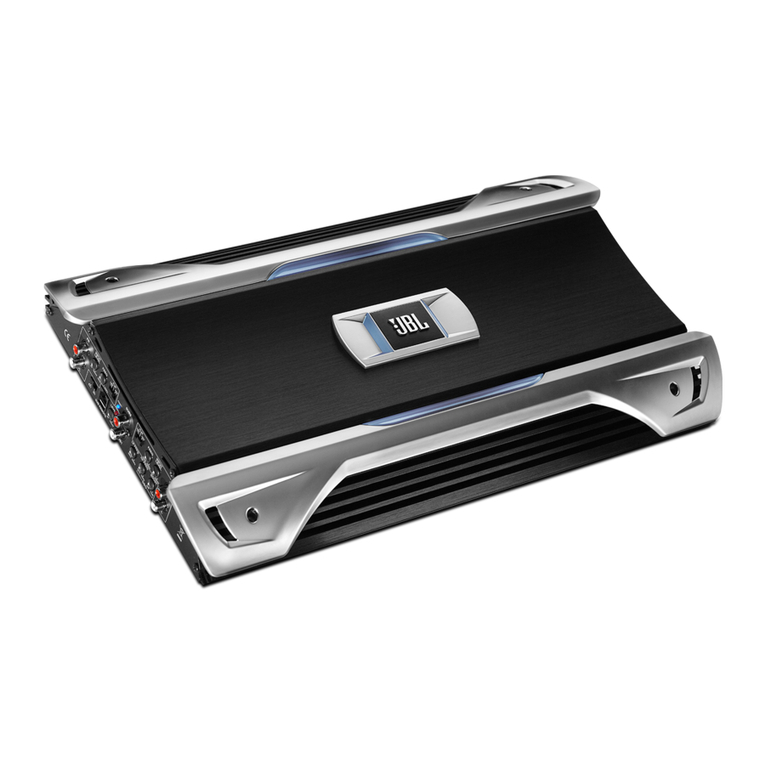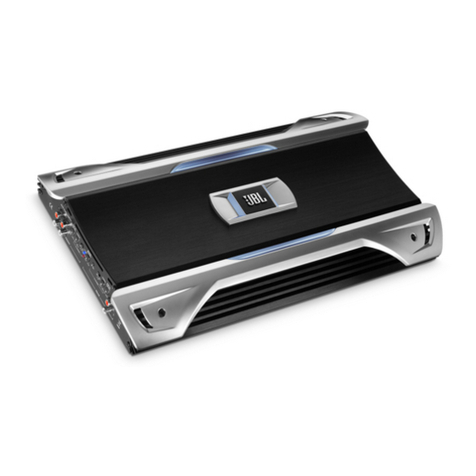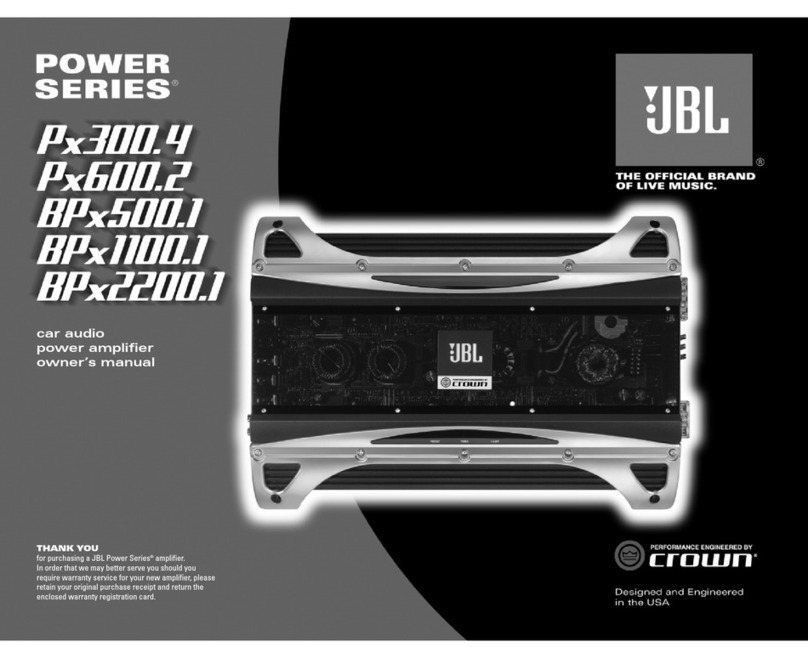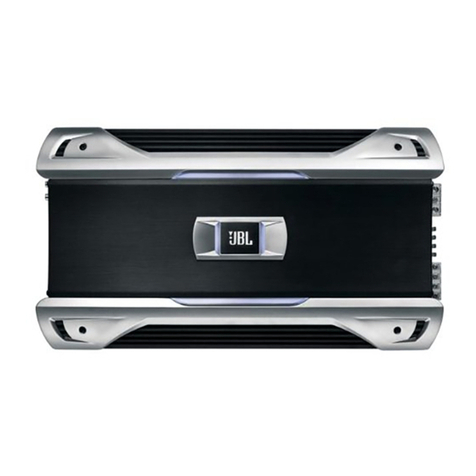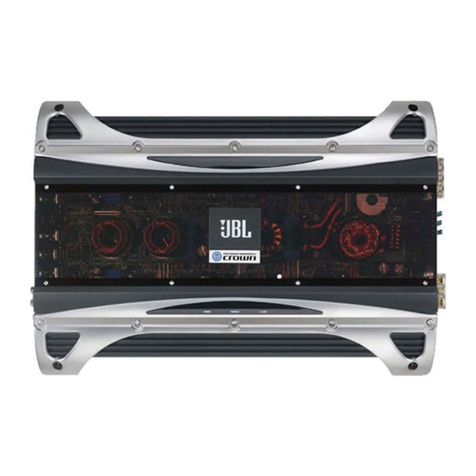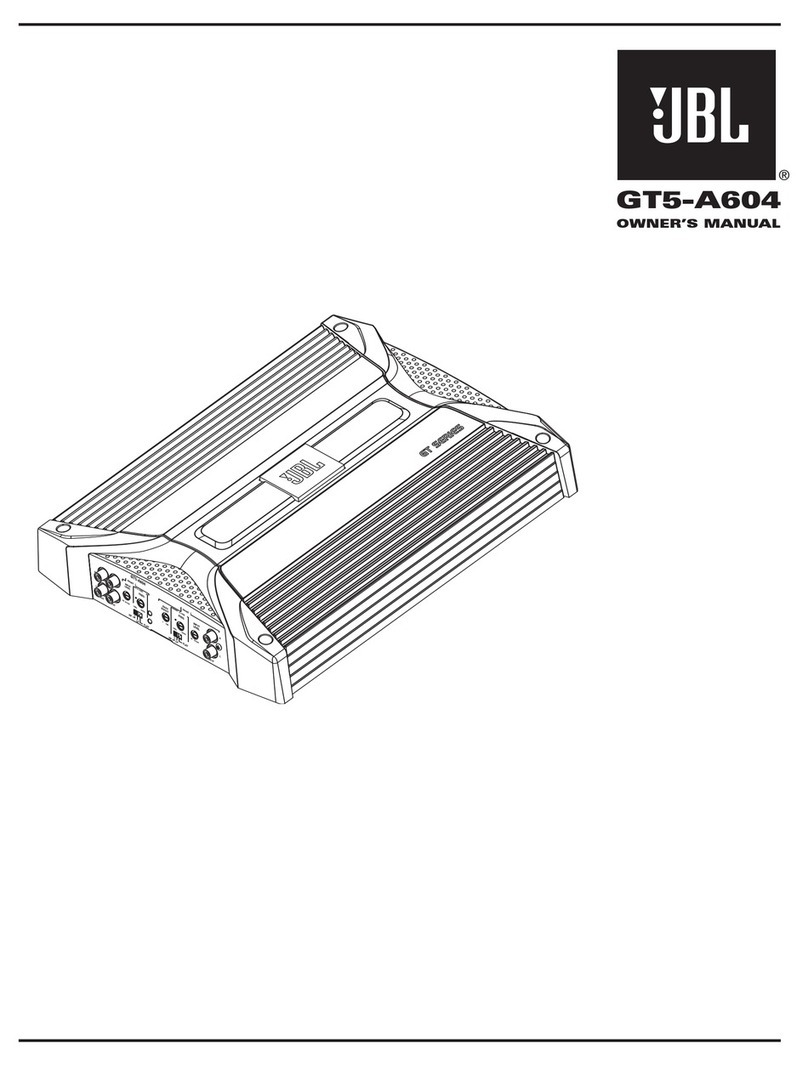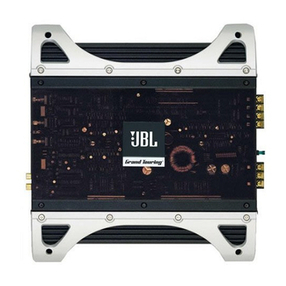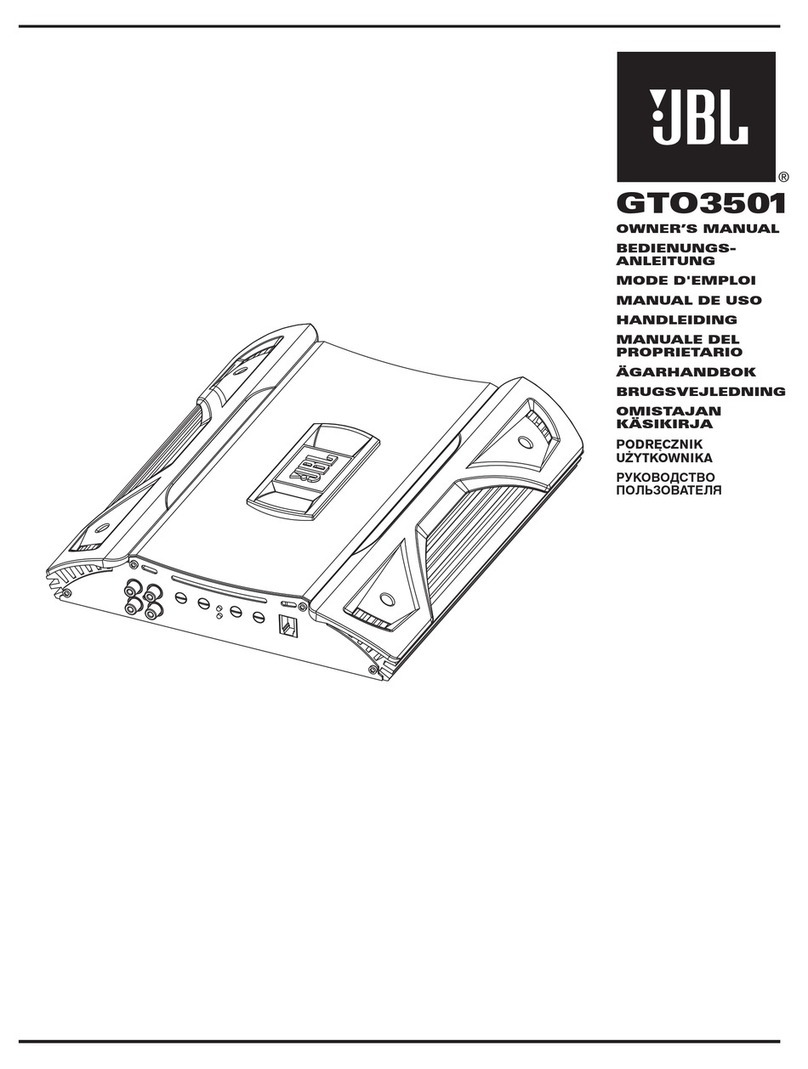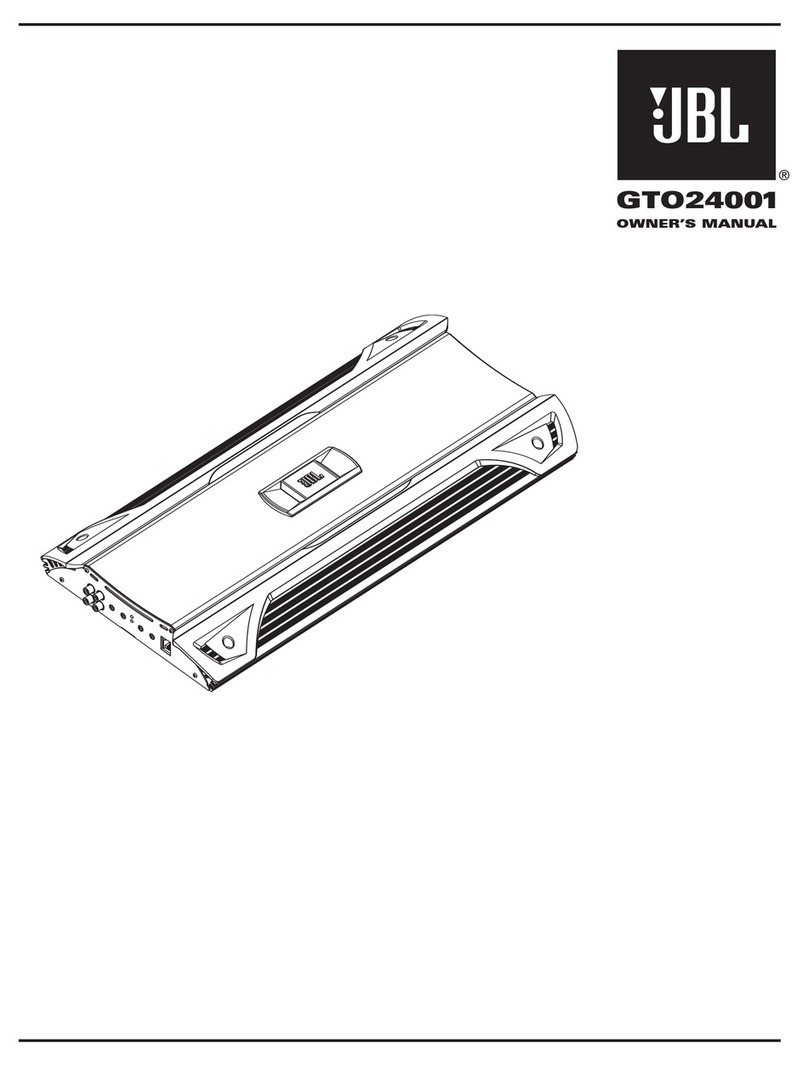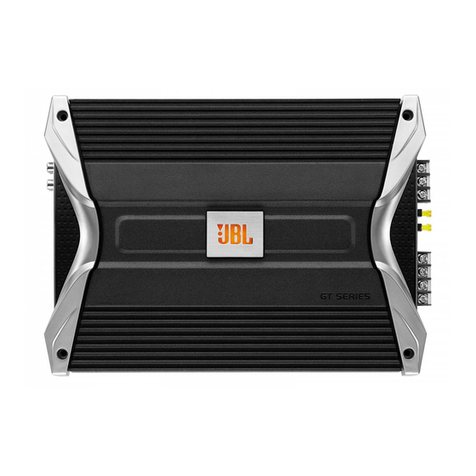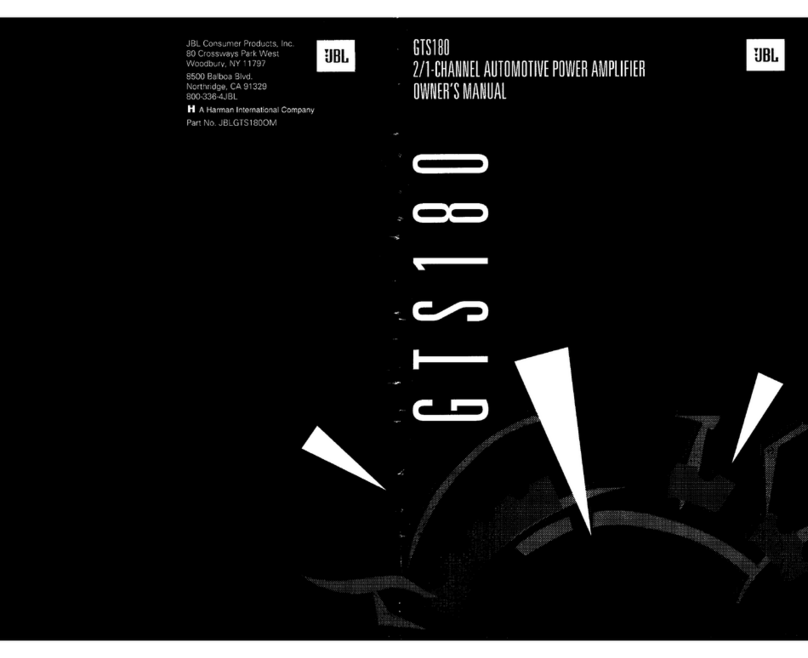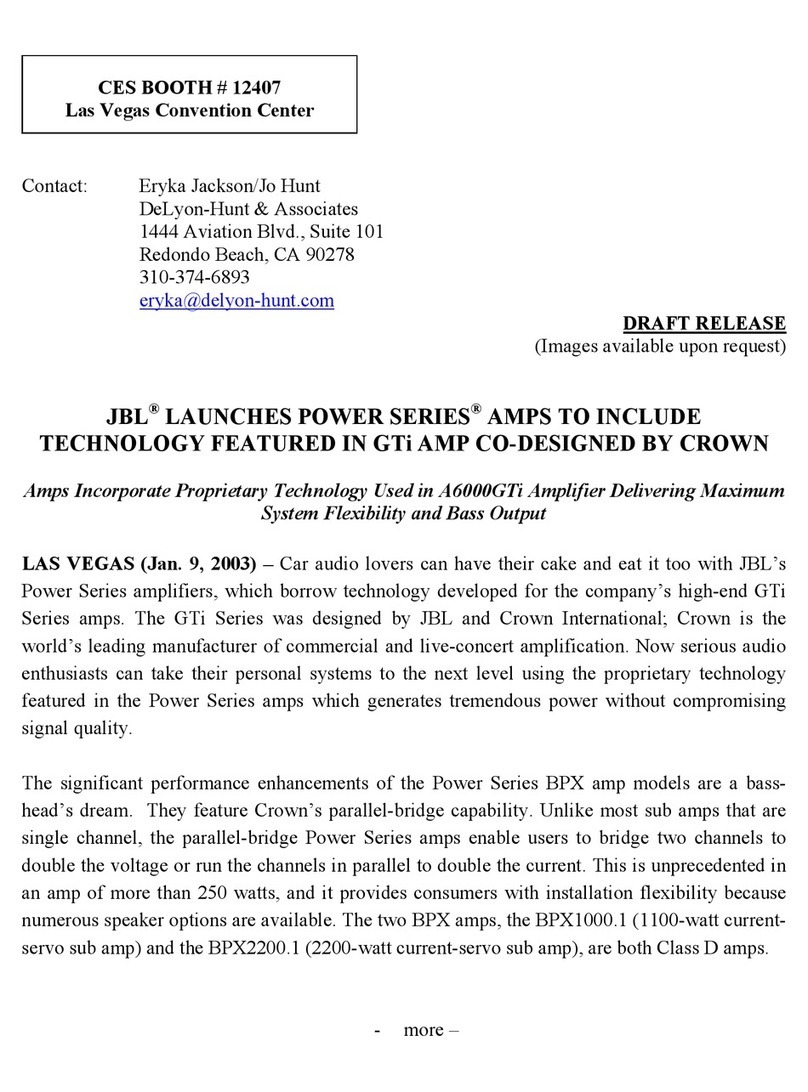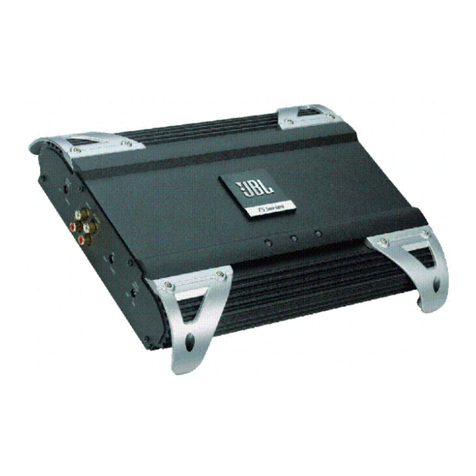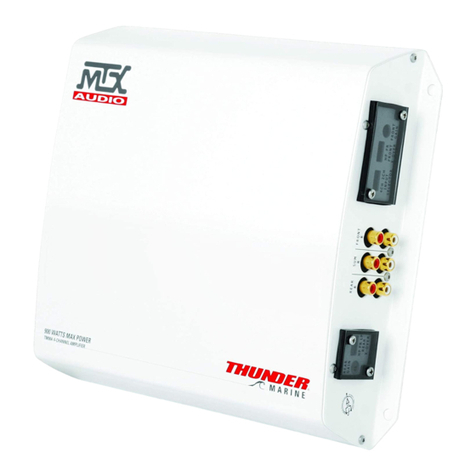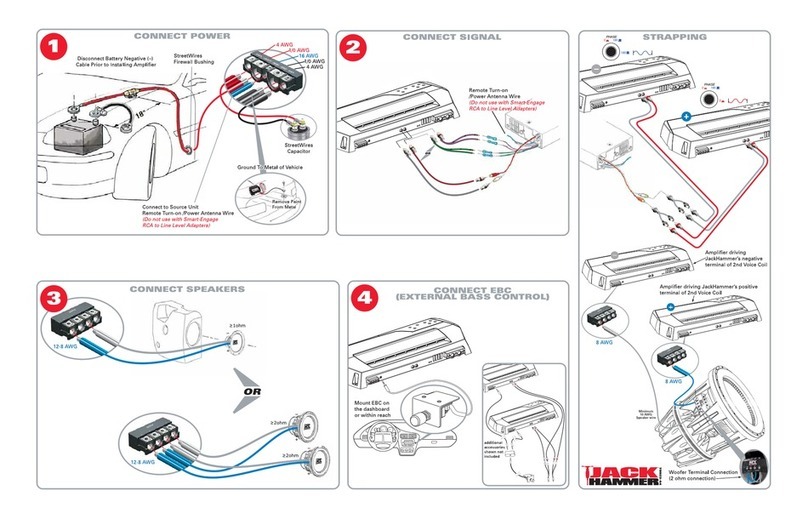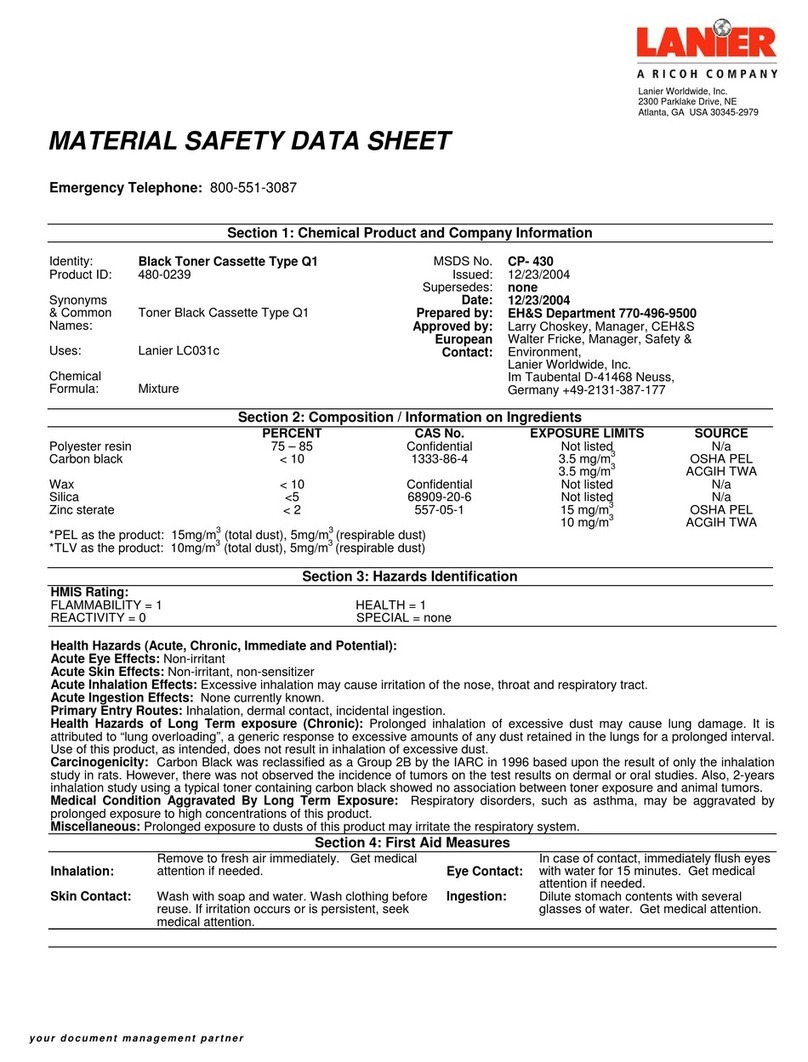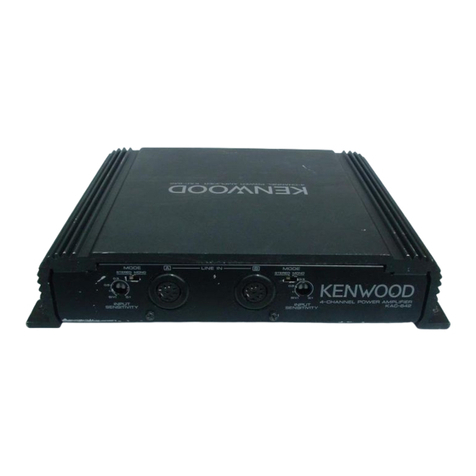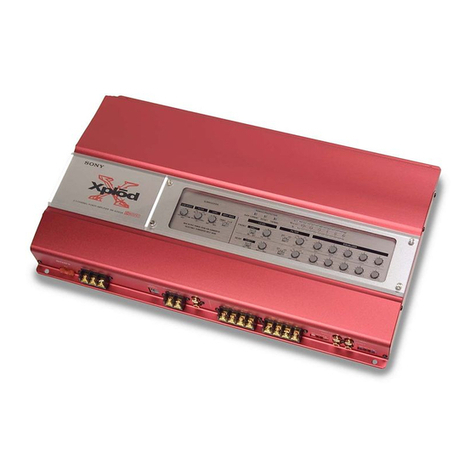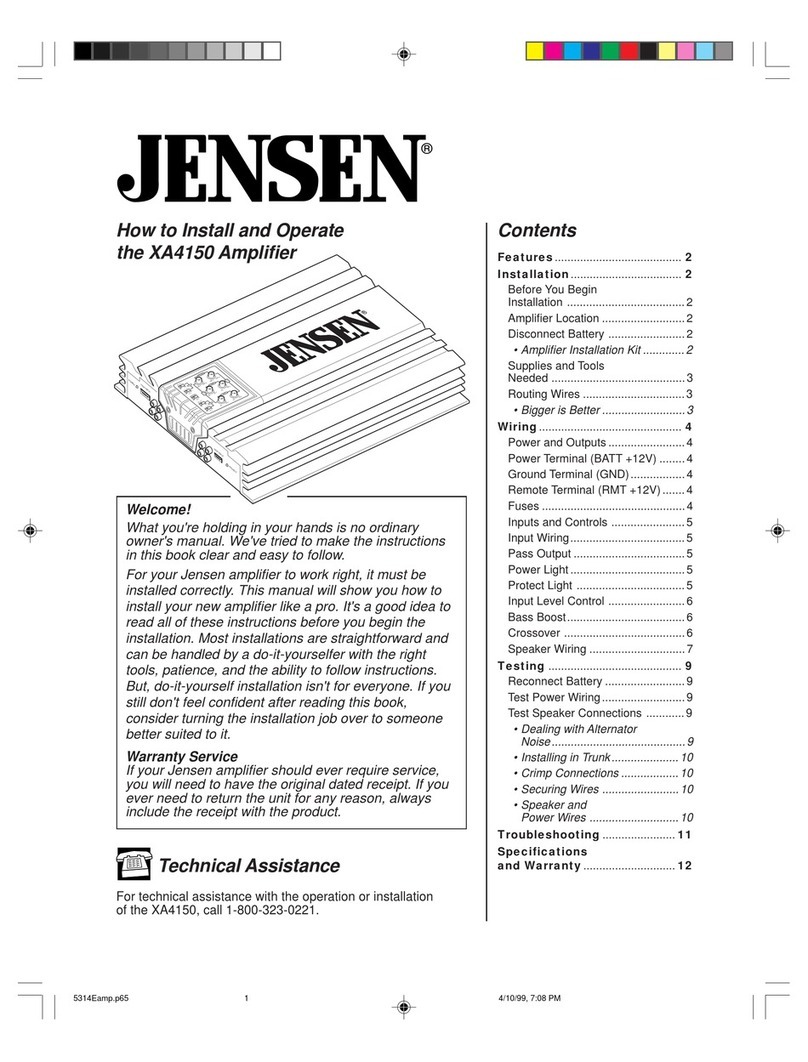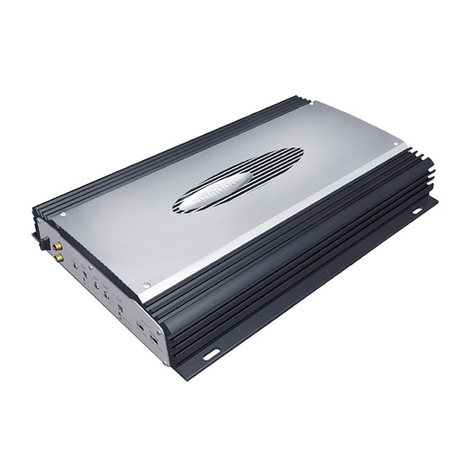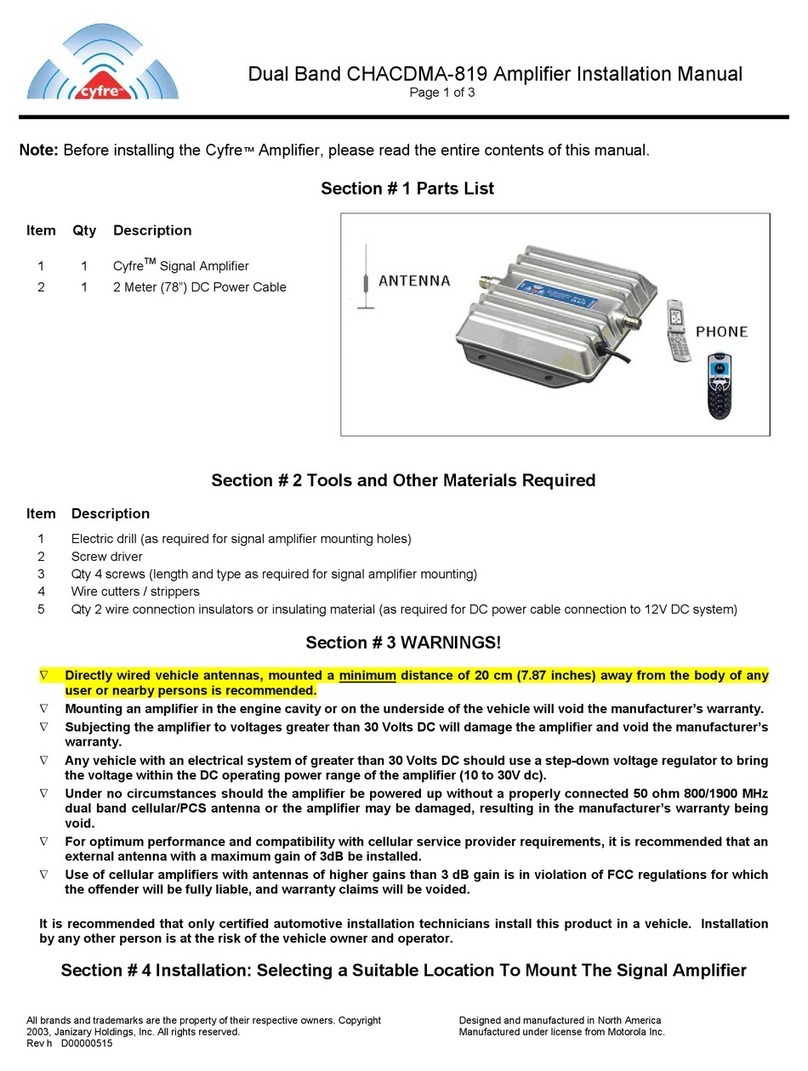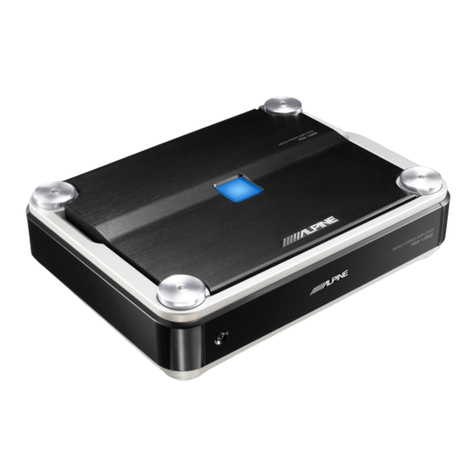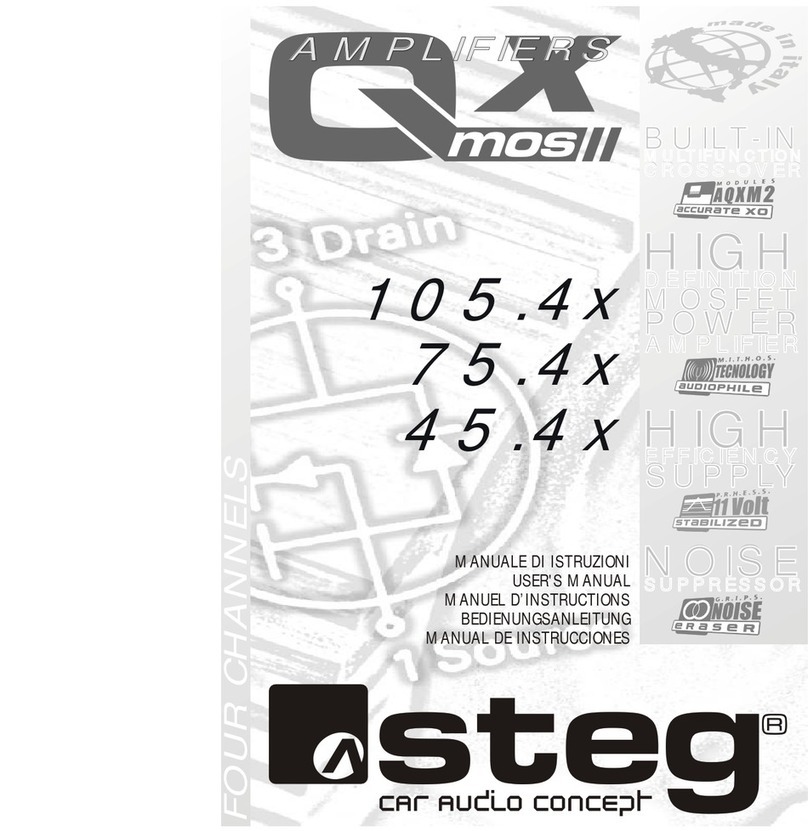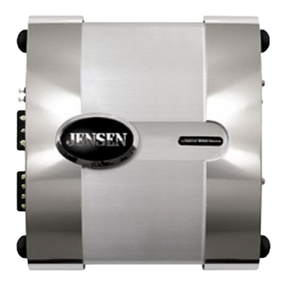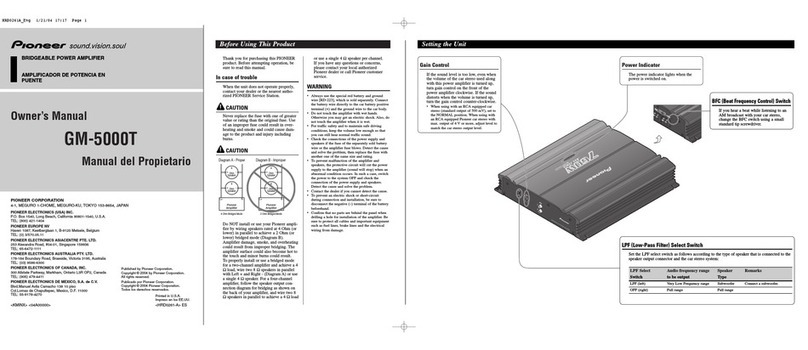10 Installation Precautions
Before beginning the installation
of the amplifier, read the follow-
ing precautions carefully. Failure
to heed these warnings could
result in personal injury or dam-
age to property.
• The GTS100x should be
installed only in vehicles that
have 12-volt negative ground
electrical systems. Connection
to other types of electrical
systems may damage the
amplifier and/or the vehicle’s
electrical system.
• Before beginning the installa-
tion, disconnect the negative
(ground) cable from the vehi-
cle’s battery. This will prevent
accidental short circuits while
working on the installation.
Reconnect the cable only after
the installation is complete and
the wiring has been carefully
checked to be sure there are no
exposed wires or short circuits
and everything is properly and
securely connected. Note: If
the vehicle’s radio features a
code-type security system,
make certain you know the
code before disconnecting
the battery!
• Work in an area that is well
ventilated.
• Wear eye protection whenever
cutting, drilling or filing any
parts of the vehicle.
• Wear ear protection when using
high-speed drills, saws,
sanders, or grinders. We want
you to be able to enjoy the sys-
tem once it is installed.
Installation and Use
• Before cutting or drilling any
holes in the vehicle, inspect the
area carefully to be sure there
are no electrical wires, hy-
draulic brake lines, fuel lines,
or fuel tanks that may be dam-
aged while doing so. Such com-
ponents may be hidden within
double-walled panels or struc-
tural members of the vehicle,
so be extremely cautious.
• Do not bypass or modify the
fuse on the chassis of the
amplifier. Do not replace the
fuse with one rated for higher
current levels. Doing so could
result in damage to the ampli-
fier and the vehicle’s electrical
system. Repeated blowing of
the power supply fuse indicates
a fault within the amplifier or
problems in the installation.
• An additional power supply
fuse (not included) should be
located as close as possible to
the battery on the +12V wire to
minimize the chance of electri-
cal system damage or fire in
the event of a short circuit in
the power supply wire.
GTS100x OM 7/16/98 2:56 PM Page 10
